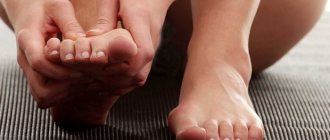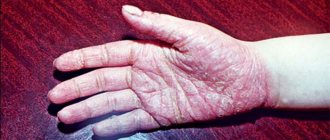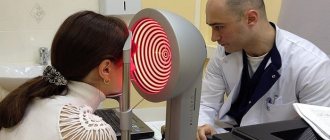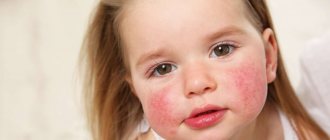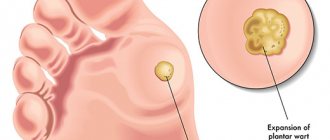Causes
The main causes of allergic reactions on the hands:
- Hereditary predisposition. Characteristic of neurodermatitis, eczema, and other allergic dermatoses. If both parents have allergic diseases, the risk of developing neurodermatitis in a child is 70%2.
- Diseases of the gastrointestinal tract. Biliary dyskinesia, chronic gastritis, and disruption of the pancreas can contribute to the development of allergies and their transition to a chronic form.
- Impaired skin barrier function.
- Regulation disorders of the central nervous system.
- Bad habits (smoking, alcohol abuse).
- Unfavorable environmental conditions.
Allergy is a multifactorial disease that requires complex treatment. In some cases, it is not possible to determine the exact cause of the disease.
General information
Skin itching is one of the interdisciplinary problems that are relevant both for dermatovenerology and allergology, endocrinology, infectology, and oncology.
Some forms of itching (anal itching, scrotal itching, vulvar itching) are considered in ICD-10 as independent nosologies. Itchy conditions are more often diagnosed in women. Frequent background factors are low socioeconomic status, depressive states, constant stress, periods of hormonal changes (pregnancy, menopause). Depending on the course, skin itching can be acute (sudden, short-term) and chronic (long-term, debilitating), according to the area of the itchy surface - localized (local) and generalized (diffuse). According to the mechanism of occurrence, skin itching is divided into:
- pruritoceptive (due to skin diseases);
- systemic (due to general diseases);
- psychogenic (due to mental disorders);
- neurogenic (due to damage to the nervous system).
Atopic dermatitis
Neurodermatitis or atopic dermatitis is a chronic condition that first appears in early childhood. Neurodermatitis on the hands is accompanied by severe itching, which can interfere with sleep at night. Rashes can occur on the scalp, face, neck, upper and lower extremities. Visually, during the acute period of the disease, redness, swelling of the skin, itchy spots of various shapes and sizes, exudation with subsequent formation of crusts are noted. When transitioning to the chronic stage, the skin becomes dry, flaky, and areas of thickening of the skin appear with an intensification of the skin pattern.
There are three age periods of atopic dermatitis:
- infant (up to 2 years);
- children (from 2 to 13 years);
- teenage and adult (13 years and older).
The disease lasts a long time, and other allergic diseases (seasonal rhinitis, bronchial asthma) may occur. In adolescents, rashes may be accompanied by symptoms of vegetative-vascular dystonia (weakness, mood swings, headaches, discomfort in the heart area).
Eliminating symptoms
Tell your healthcare provider as soon as you develop symptoms. Be sure to tell your doctor if you have diabetes, vascular disease, or peripheral neuropathy. These diseases cause destruction of the skin, prevent wound healing and can cause infection.
Follow the tips below to help you manage these symptoms.
It is forbidden:
- Pop blisters. Apply a petroleum-based ointment, such as Vaseline®, and cover it with a bandage (Band-Aid®).
- Immerse your hands and feet in hot water or a hot bath.
- Take hot baths.
- Wearing socks, tights or shoes that are too tight.
- Doing anything that requires rubbing your palms or soles, other than lightly applying lotion or cream.
Need to:
- Wear thick, soft cotton socks with all shoes. We also recommend using wicking foam insoles and shock-absorbing inserts to ease the pressure of shoes on your feet.
- Wear heavy cotton gloves when doing chores around the house or outside the home, such as cleaning the house, gardening, or grocery shopping.
- Keep your hands and feet well moisturized. To do this, soak them in cool water for 20 to 30 minutes, pat them dry with a towel, and then apply a fragrance-free moisturizer such as Eucerin®. This should be done at least once a day.
- Use unscented lotion or cream containing petroleum products, for example: Urea cream;
- Kerasal® One Step Exfoliating Foot Moisturizer Therapy™;
- Udderly Smooth®;
- if you are over 18 years of age, you can also use the tools below; do not use these if you are under 18 years of age: salicylic acid;
- moisturizer CeraVe® SA.
- steroids;
to come back to the beginning
Hives
An allergic rash on the hands of an adult can be a symptom of urticaria. Urticaria is characterized by redness, swelling of the skin, and the appearance of itchy blisters. Local edema develops due to increased vascular permeability upon contact with allergens. The rash is accompanied by intense itching and can appear on any area of the skin. Symptoms of acute urticaria completely disappear within a day (usually a few hours after stopping contact with the allergen).
Forms of the disease:
- Immunological urticaria (the development is based on a hypersensitivity reaction).
- Physical urticaria (reaction to high or low temperatures, sun, pressure, other physical factors).
- Drug-induced urticaria.
- Idiopathic urticaria (when the cause of the rash cannot be determined)3.
A dangerous complication of the disease is angioedema. It is accompanied by swelling of the deep layers of the dermis, subcutaneous tissue, submucosal layer of the upper respiratory tract, gastrointestinal tract, and urogenital tract3. When the first signs of Quincke's edema appear, you should immediately consult a doctor.
Medicines that may cause a reaction
Hand-foot syndrome
The following medications may cause hand-foot syndrome.
- capecitabine (Xeloda®);
- Doxorubicin (Adriamycin®)
- Fluorouracil (5-FU®)
- Liposomal doxorubicin (Doxil®)
- Cytarabine (Cytosar-U®)
Palmoplantar skin reaction
The following medications may cause hand-foot reaction.
- Sorafenib (Nexavar®)
- Sunitinib (Sutent®)
- Cabozantinib (Cometriq®)
- Regorafenib (Stivarga®)
- Axitinib (Inlyta®)
- Pazopanib (Votrient®)
- Vandetanib (Caprelsa®)
- Vemurafenib (Zelboraf®)
- Dabrafenib (Tafinlar®)
to come back to the beginning
Contact dermatitis
A common allergic skin disease that occurs due to skin contact with allergens. It can occur in acute or chronic form. During an exacerbation, it manifests itself as redness of the skin and the formation of itchy blisters. In the chronic version, the skin becomes dry and the skin pattern intensifies2.
Allergens that can cause rashes include:
- metals (nickel, cobalt, chromium, aluminum);
- rubber and rubber products (balloons, latex gloves, condoms);
- cosmetics and perfumes (containing flavors, stabilizers, preservatives);
- local medications (anaesthetics, glucocorticosteroids, antibiotic ointments);
- Hair Dye;
- synthetic glue, adhesives;
- plants (primrose, poison ivy and others).
The development of dermatosis can occur through allergic or non-allergic pathways (irritant contact dermatitis). It is important to identify the substance causing the rash in time and avoid contact with it.
Diagnostics
Since skin itching is caused by a variety of reasons, specialists from various medical fields are involved in identifying them: dermatologists, parasitologists, trichologists, allergists-immunologists, ophthalmologists, endocrinologists. The nature of the itching can be assumed based on the collected history, localization, and the presence of skin elements (vesicles, papules, pustules, scales, excoriations, crusts). Taking into account the suspected etiology, the examination may include:
- Examination of the skin and scalp.
It is carried out using a Wood's lamp, dermatoscope, trichoscope. Allows you to conduct a visual assessment of skin elements, hair condition, and identify the presence of parasites. Scales and questionnaires are used to measure the severity of itching. - Laboratory diagnostics.
If a systemic nature of skin itching is suspected, the level of thyroid hormones, glucose, liver enzymes, urea and creatinine in the blood is determined. They perform microscopy of skin scrapings, stool analysis for helminth eggs, and spectral analysis of hair for the content of vitamins and heavy metals. Markers of viral hepatitis and HIV infection are studied. - Ophthalmological diagnostics.
A basic examination includes biomicroscopy of the eye, fundus examination, and tonometry. An instillation test with fluorescein is used as an additional method. - Allergy diagnostics.
The main methods for identifying allergies are blood tests (individual allergens, histamine, total IgE) and skin allergy tests for atopy antigens (prick test, prick tests). - Other examinations.
To exclude damage to internal organs as the cause of skin itching, an ultrasound of the hepatobiliary system and kidneys is performed. In unclear cases, a skin biopsy is required.
Examination by a dermatologist
Eczema
Eczema is a chronic inflammatory skin disease characterized by the appearance of a polymorphic rash and severe itching. True eczema is manifested by redness and limited swelling of the skin, on which small blisters appear filled with transparent contents2. After opening the bubbles, erosions remain, which eventually become covered with crusts. In the chronic form of the disease, the skin thickens. The rashes are symmetrical, most often occurring on the upper, lower extremities and torso.
Cetrin for hand allergies
Cetrin is a second generation antihistamine whose active ingredient is cetirizine hydrochloride. It blocks H1-histamine receptors, helping to reduce swelling, redness, and itching of the skin. Cetrin is used for the following diseases: hay fever, urticaria, neurodermatitis, allergic rhinitis and conjunctivitis.
Advantages of the product:
- The effect of use and relief of symptoms begins 20 minutes after taking the tablet.
- Convenient method of use (one tablet is enough to maintain the effect for 24 hours4).
- Suitable for long-term treatment, non-addictive.
- Practically does not cause drowsiness5.
- Eliminates symptoms regardless of the factor that caused the allergy.
Cetrin can be taken regardless of meals; the therapeutic effect lasts for three days after the end of the course of treatment4.
Treatment with medications
The prescription of medications will directly depend on the reason why your palms itch. In general, a specialist may prescribe antiseptic, anti-inflammatory or antihistamine drugs to the patient. They can be presented in the form of medicines for internal use, as well as in the form of various ointments and creams for external use. However, some of them can only be sold with a doctor's prescription. Particularly effective external agents are:
Elokom.- Bepanten.
- Fenistil.
- Lokoid.
- Advantan.
- Radevit.
- Ketoconazole.
- Nizoral.
Literature:
- Werfel T., Breuer K., Rueff F et. Al. Usefulness of specific immunotherapy in patients with atopic dermatitis and allergic sensitization to house dust mites: a multi-centre, randomized, dose-response study. Allergy, 2006. - V. 61. - Issue 2. - P. 202-205.
- Clinical allergology. Guide for practicing doctors / ed. R.M. Khaitova. - M., 2002. - 624 p.
- Russian national conciliation document. Urticaria and angioedema. Recommendations for practicing physicians. — Ed. I.S. Gushchina, N.I. Ilyina. - M.: Farmarus Print Media, 2007. - 128 p.
- Instructions for medical use of the drug Cetrin®.
- Kareva E.N. Choosing an antihistamine: a pharmacologist’s view // RMJ. 2016. No. 12. pp. 811–816.
